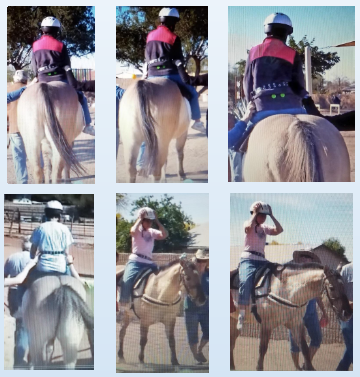Session Information
Date: Monday, September 23, 2019
Session Title: Physical and Occupational Therapy
Session Time: 1:45pm-3:15pm
Location: Les Muses Terrace, Level 3
Objective: To explore the feasibility and effects of equine-assisted intervention (hippotherapy) on axial symptoms underlying gait and balance in people with Parkinson disease (PD).
Background: People with PD commonly experience progressive rigidity of the neck, trunk and hips, which contribute to balance and gait difficulties and frequent falls. This leads to isolation, depression, loss of independence and mobility, increased morbidity and mortality, and reduced quality of life. Axial rigidity is not responsive to levodopa medication, thus understanding the feasibility and impact of hippotherapy on rigidity, gait and balance will address the need to develop therapies for people with PD. Hippotherapy, has been widely shown to reduce muscle spasticity and improve posture and gait in children with cerebral palsy and more recently in adults with multiple sclerosis and adults post stroke. However, the impact of hippotherapy on axial rigidity in people with PD has not been explored.
Method: Case report of three individuals (2 female, 1 male; age 73, 67, and 72 years, respectively) who participated in 12 weekly 1-hour hippotherapy sessions. Cervical and trunk rotation (goniometric measures), gait speed, functional mobility and balance (Timed Up and Go Test, MiniBESTest), and self-report assessments of self-efficacy (General Self-efficacy Scale) and quality of life (PDQ-39) were assessed before and after the intervention.
Results: Participants improved in gait speed and functional mobility by 20-25% and gained 30-50% in axial rotation (cervical and trunk combined). Balance improved by 10-32% on the MiniBESTest, general self-efficacy improved only slightly, and health-related quality of life improved by 15-30%. Attendance was over 80% with no adverse events or reported discomfort.
Conclusion: Equine-assisted physical therapy (hippotherapy) may be a feasible and effective intervention to target axial rigidity, improving gait, balance and quality of life.
References: 1. Meregillano G. Hippotherapy. Phys Med Rehabil Clin N Am 15(4), 843-854, vii (2004). 2. Kim SG, Lee CW. The effects of hippotherapy on elderly persons’ static balance and gait. J Phys Ther Sci 26(1), 25-27 (2014). 3. Lee CW, Kim SG, Yong MS. Effects of hippotherapy on recovery of gait and balance ability in patients with stroke. J Phys Ther Sci 26(2), 309-311 (2014). 4. Silkwood-Sherer D, Warmbier H. Effects of hippotherapy on postural stability, in persons with multiple sclerosis: a pilot study. J Neurol Phys Ther 31(2), 77-84 (2007).
To cite this abstract in AMA style:
T. Mcisaac, J. Hayes, J. Goodman, O. Harpham, N. Erickson. Hippotherapy for axial symptoms, gait and posture in people with Parkinson disease: A case report [abstract]. Mov Disord. 2019; 34 (suppl 2). https://www.mdsabstracts.org/abstract/hippotherapy-for-axial-symptoms-gait-and-posture-in-people-with-parkinson-disease-a-case-report/. Accessed January 7, 2026.« Back to 2019 International Congress
MDS Abstracts - https://www.mdsabstracts.org/abstract/hippotherapy-for-axial-symptoms-gait-and-posture-in-people-with-parkinson-disease-a-case-report/

